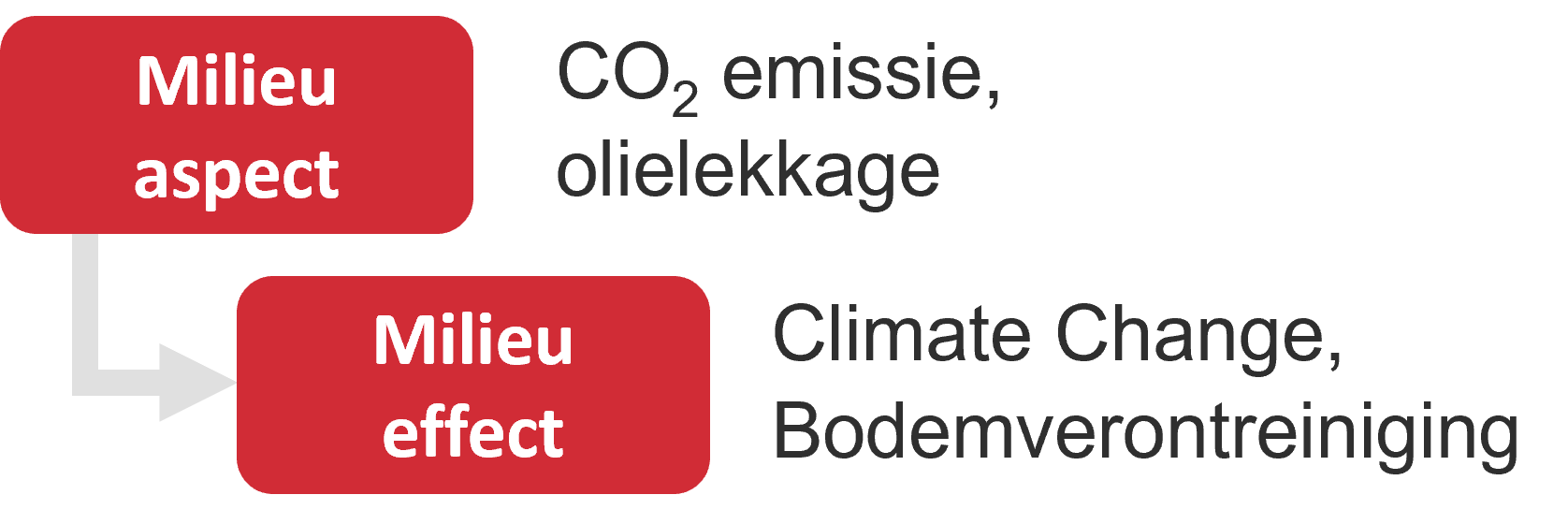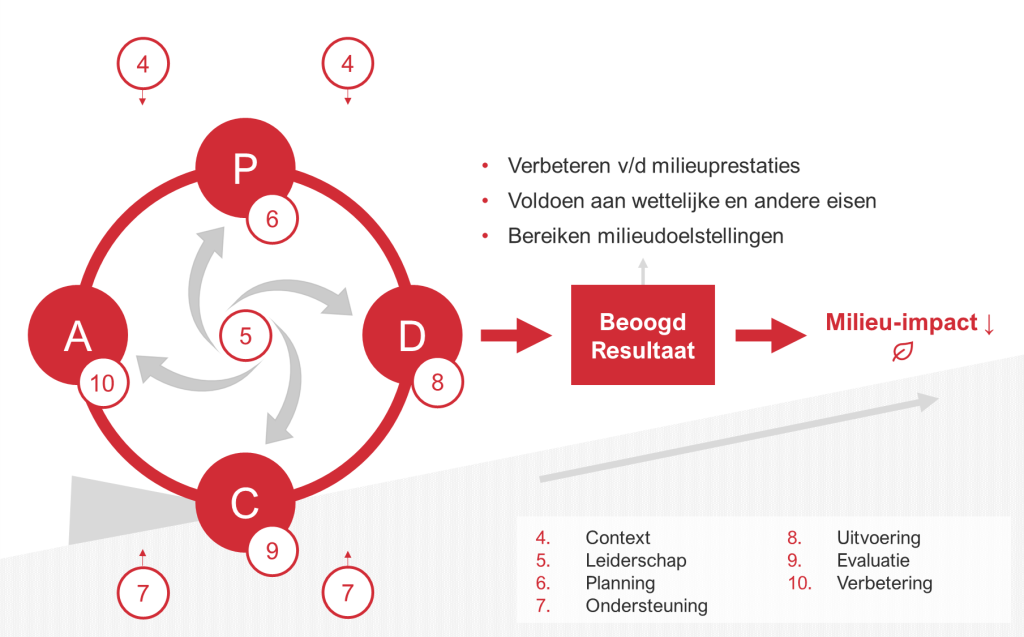ISO 14001:2015
ISO 14001:2015
Are you an organisation concerned about the environment and keen to structurally improve your organisation's environmental performance? If so, implementing an environmental management system (EMS) is a must. The ISO 14001:2015 standard is the standard of choice to help you do this.
Wat is ISO 14001?
In business, the relationship with the environment, 'environmental management', is becoming increasingly important. This is mainly due to society's increasing focus on the environment and sustainability. To develop an appropriate environmental policy and ensure its implementation, an Environmental Management System (EMS) can be called - set up.
ISO 14001 specifies requirements for an environmental management system with the aim of improving your environmental performance. The standard thus provides a useful tool for evaluating, improving and reporting on environmental performance, as well as monitoring compliance with environmental legislation.By obtaining ISO 14001 certification, you demonstrate that you have integrated environmental aspects into your business operations.

- Environmental aspect = part of activity, product or service, interacting with the environment
- Environmental impact = favourable or unfavourable change in the environment, wholly or partly resulting from an organisation.
The environmental management system ensures that consistent attention is paid to all environmental aspects relevant to business operations. Here, as an organisation, you have to look at the various environmental themes (water, air, waste, energy, etc.), taking into account the 'life cycle perspective' of your product or service. In other words, you are not limited to the boundaries of your own organisation, but are also aware of your environmental performance throughout the chain (inbound and outbound!). Think about air pollution, energy consumption, waste management, the use of natural resources, waste... Only by systematically including all these factors can you achieve continuous improvement in terms of the environment and sustainable management.
ISO 14001:2015
Although environment has been an important issue for centuries, it was only since the 1980′s that environmental management was really being worked on. Out of the growing awareness that more and more companies worldwide were actively engaged in environmental management, international standards were created to standardise this. From some of these standards, the first version of the ISO 14001 standard was developed and published in 1996. That standards document has since been updated 3 times by an expert committee.
At the end of 2015, the latest version of the ISO 14001 standard was released, officially named NBN EN ISO 14001:2015 in Belgium.In Belgium, the NBNBureau for Standardisationis responsible for publishing (international and European) standards. Once a Belgian publication takes place, the standard automatically receives this addition. The 'EN' suffix in turn refers to the European publication by CEN-CENELEC..
In addition, the European Environmental Management and Audit Scheme (EMAS) also exists as a European Union (EU) environmental management and audit system. The environmental management system requirements in the EMAS regulation are identical to ISO 14001.
Why ISO 14001 certification?
Today, everyone wants to be sure that your organisation complies with all applicable environmental regulations. ISO 14001 certification is internationally recognised for environmental management and gives your credibility a big boost in negotiations.
An important part of ISO 14001 is to check your organisation's operation against current and future environmental performance regulations. This gives you a stronger assurance that environmental laws and regulations are properly identified and controlled.
The ISO 14001 standard also provides a management tool to help you systematically achieve better environmental performance. By looking at your energy consumption, waste management, resource use, etc., you can identify improvements and save costs.
In a society where sustainability is an absolute priority, the ISO 14001 certificate is a valuable communication tool. You give confidence to new and current customers, suppliers, local residents, ... that as an organisation you care about the environment.
More and more clients include strong environmental performance as a condition. An ISO 14001 certificate is also increasingly valued in tenders because these organisations have demonstrably put their environmental affairs in order.
The content of ISO 14001
ISO 14001 - like most ISO standards - is drafted according to the Harmonised Structure (HS) principal.This means that these standards have a common core text and the same structure. This ensures that topics covered in each standard are always addressed in the same place (chapter & paragraph).
The standard consists of 11 chapters, which are shown below. The first four chapters (0 to 3) contain general explanations, while chapters 4 to 10 describe the core of the standard, i.e. the standard requirements.
| Chapter 0: Introduction | Chapter 6: Planning |
| Chapter 1: Scope | Chapter 7: Support |
| Chapter 2: Normative references | Chapter 8: Implementation |
| Chapter 3: Definitions | Chapter 9: Evaluation |
| Chapter 4: Context of the organisation | Chapter 10: Improvement |
| Chapter 5: Leadership |

Who is ISO 14001 intended for?
Every organisation has an ecological impact on its environment. If it is not through the activities of the organisation itself, it is through the procurement of products and services. ISO 14001 is therefore a useful guide for every organisation..
The ISO 14001 standard indicates what must be regulated in the management system; the details are determined by each organisation.If your organisation has a limited number of environmental aspects and environmental risks, the interpretation of the management system is adapted accordingly.
De ISO 14000 serie
The ISO 14000 series helps organisations manage their environmental responsibilities. The best-known - and only certifiable - standard in the series is ISO 14001. The other, complementary guidelines serve to support ISO 14001 and each focuses on partial aspects, such as auditing, communication, labels, ecodesign and life-cycle analysis.
The ISO 14000 series
- ISO 14001 ‘'Environmental management systems - Requirements with guidelines for use'
- ISO 14004 ‘‘Environmental management systems – General guidelines on implementation’
- ISO 14005 ‘Environmental management systems – Guidelines for a flexible approach to a phased implementation’
- ISO 14006 ‘Environmental management systems – Guidelines for incoporating ecodesign'’
- ISO 14015 ‘Environmental management – Environmental assessment of sites and organizations’
- ISO 14040 ‘Environmental management – Life cycle assessment – Principles and framework’
- ISO 14044 ‘Environmental management – Life cycle assessment – Requirements and guidelines’